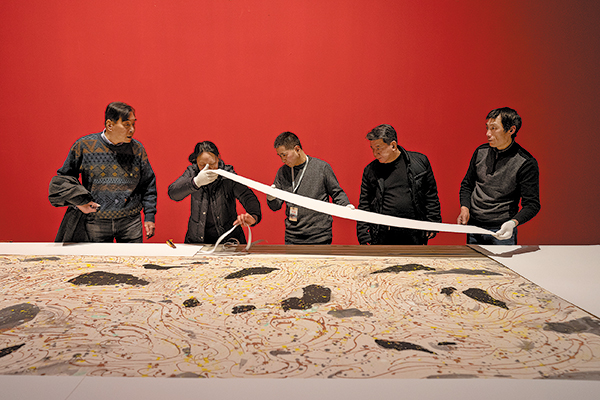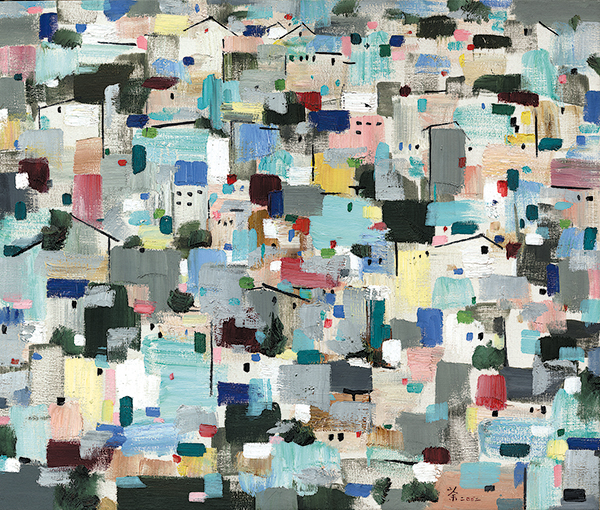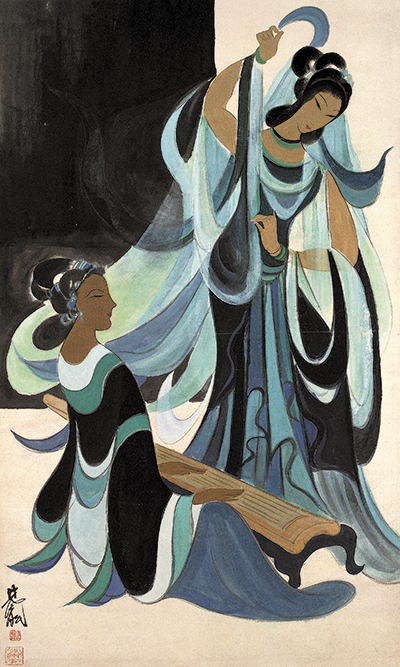Shanghai exhibition paints picture of change

The crew from China Art Museum (Shanghai) prepare the exhibition.[Photo by Gao Erqiang/China Daily]
The latest exhibition at the China Art Museum (Shanghai) opened on Saturday is the largest ever showcase of two modern Chinese masters: Lin Fengmian (1900-91) and Wu Guanzhong (1919-2010).
Pictures of China: Artworks by Lin Fengmian and Wu Guanzhong presents 200 paintings, sketches and other work by the artists that cover the different phases of their careers, says Wang Yichuan, Party secretary of the China Art Museum (Shanghai), which was previously known as the Shanghai Art Museum.
The exhibition is being hosted in collaboration with the Tsinghua University Art Museum, the Shanghai Chinese Painting Academy and the Shanghai Artists Association.
Both men studied in France, and returned to make significant contributions to the modernization of Chinese art, according to Chen Xiang, former museum director and chief curator of the exhibition. French arts and culture left a great impact on them, and the exhibition is being held as one of the events marking the China-France Year of Culture and Tourism.
Lin and Wu left large collections of paintings in Shanghai. Wu donated many of his to the Shanghai Art Museum, which held two important retrospectives of the artist in 2006 and 2010. Wu's family donated a third batch of paintings to the museum after his death, as Wu recognized the development of the city's art scene, explains Yang Qi, deputy director of the Shanghai Chinese Art Academy.
Lin worked at the Shanghai Chinese Art Academy for many years. He handpicked around 100 paintings and had them stored at the academy before leaving Shanghai for Hong Kong in 1977. He later donated them to the academy, together with another 118 paintings. The hand-chosen selection is standard art market examples of Lin Fengmian paintings, Chen explains, adding that in the past, Lin Fengmian fakes often appeared at auctions and art fairs. "Sometimes, they were done so well that I would not have been able to tell if I didn't know that the original painting was in the warehouse of Shanghai Chinese Painting Academy," he says.

Urban Love by Wu Guanzhong is on display.[Photo provided to China Daily]
The exhibition of Lin's paintings, which cover the most important phases of his career and include a hanging scroll dating to the 1930s borrowed from the Guangzhou Art Museum, provide a great opportunity for art lovers and collectors to experience the artist's portfolio, Chen adds.
Lin was the son of a stonemason from modern-day Meizhou in Guangdong province. He displayed an early fascination for art and learned traditional Chinese painting techniques as a child. After middle school, he won a scholarship to study in France, where he attended the Dijon Art College and later the Ecole Nationale Superieure des Beaux-Arts in Paris. His paintings were exhibited at Paris' Salon d'Automne for two consecutive years.
In 1926, he returned to China and was invited by Cai Yuanpei (1868-1940) to be the principal of the National Beijing Fine Art School, and later the first principal of the Hangzhou National College of Art in Zhejiang province, which is known today as the China Academy of Art.
Lin believed that Chinese art should break away from the stylized tradition of the literati and elite aesthetics, and get involved in real life.
"With his studies in France, Lin developed fresh perspectives for Chinese art, and, returning to China, he embarked on a path of modernizing traditional ink painting," says Xiang Liping, executive curator of the exhibition.
While some of the artist's watercolors reflect the influence of contemporary European masters, such as Matisse and Cezanne, his portraits of ancient Chinese women, landscape paintings with birds, and country life scenes, display a harmonious combination between Chinese philosophy and Western art.
The Hangzhou National College of Art, where Lin was the founding principal, nurtured some of the country's most celebrated modern masters, among them Wu Guanzhong and Chu Teh-Chun.

The Dance by Lin Fengmian is on display.[Photo provided to China Daily]
In 1946, Wu won a government scholarship to study art at the Ecole Nationale Superieure des Beaux Arts. He was fascinated by what he saw in France, and took a great interest in European modern art. Wu returned to China in 1950 and began to teach at the Central Academy of Fine Art in Beijing, before moving to Tsinghua University and later to the Central Institute of Arts and Crafts in Beijing.
Throughout his artistic career, Wu constantly searched for authentic Chinese expressions in oil painting.
"Between the 1950s and '70s, he tried to incorporate Chinese aesthetics in oil painting, creating many rural life scenes," Xiang says. "This laid a solid foundation for the arrival of his mature phase, when he developed an ingenious approach to lines, planes, and dots in landscape paintings, achieving a synthesis of Western elements with traditional Chinese painting."
Standing at the crossroads between China and the West, inheritance and innovation, tradition and modernity, both artists chose to combine Chinese philosophy and aesthetics with the techniques developed by Western art, and facilitated the modernization of traditional Chinese ink painting, and the localization of oil painting, Xiang adds.
They incorporated lively folk art and contemporary elements into literati-dominated traditional Chinese painting, breaking its monolithic and rigid standards.

Visitors at the exhibition featuring art masters Wu Guanzhong and Lin Fengmian.[Photo by Gao Erqiang/China Daily]
"This opened new pathways for the development of Chinese painting, allowing for the emergence of a diverse modern ink art ecosystem," Xiang says. "They unveiled new possibilities in Chinese ink art and oil painting for the whole world."
Entering the exhibition hall, visitors will find themselves standing in front of the major questions faced by the two masters: Where is Chinese art heading, and what a Chinese artist can do today. From there, they can choose to turn left to view Wu's art, or turn right to view Lin's.
The final section deals with the impact of both artists, displaying work produced by their friends and disciples, as well as a selection of their letters, and other forms of artistic communication.
The museum will host a series of educational programs during the exhibition, including lectures, workshops and concerts, as well as guided tours of the former residences of both artists.
IF YOU GO
Pictures of China: Artworks by Lin Fengmian and Wu Guanzhong
China Art Museum (Shanghai),205 Shangnan Road, Pudong new district, Shanghai.
Tue-Sun, 10 am-6 pm (last entry by 5 pm) Jan 27-May 5.
Tel: 400-921-9021

